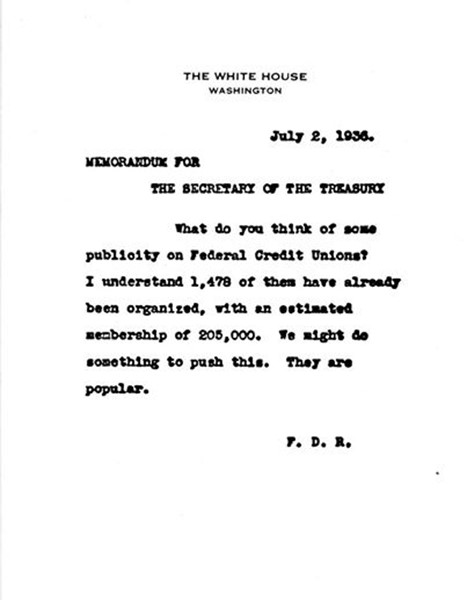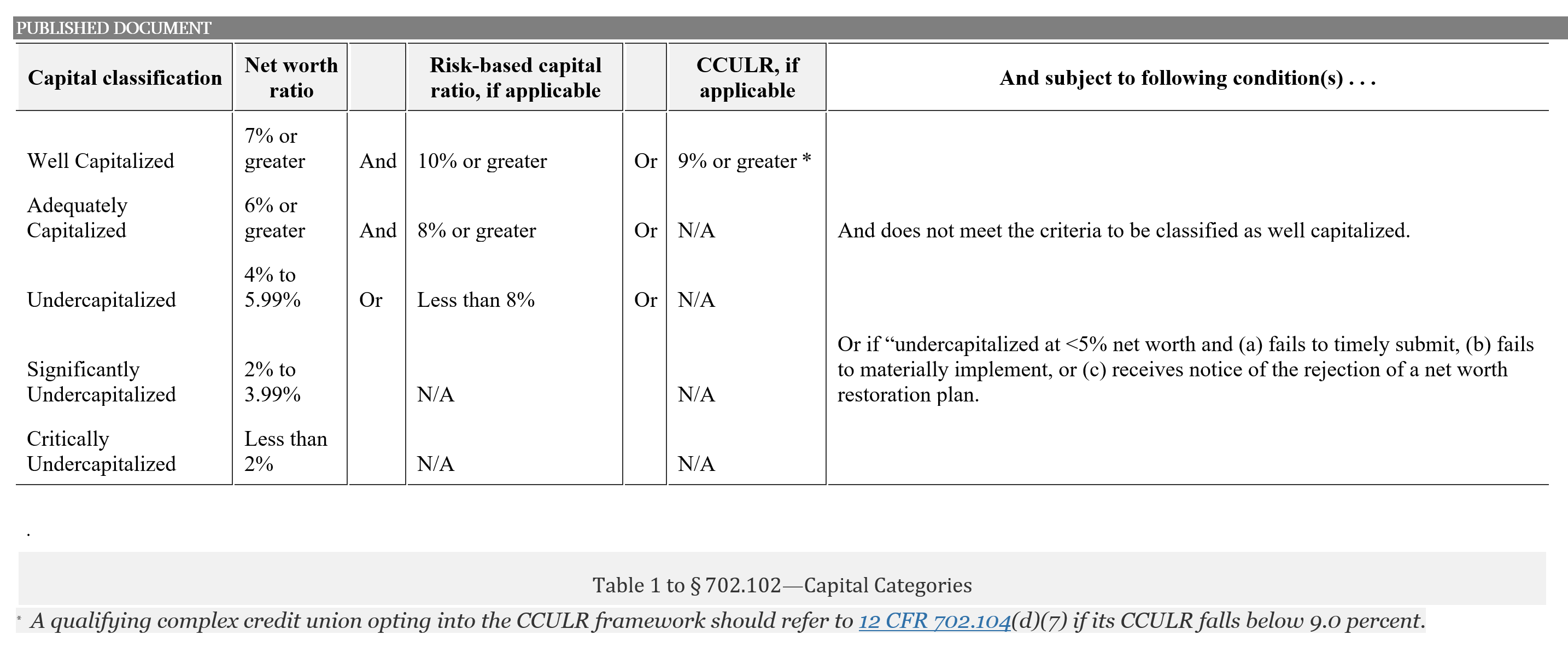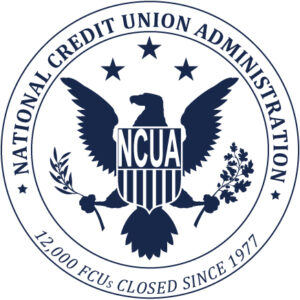In December 2021 the NCUA Board passed a completely new regulation of over 500 pages to imposing a new RBC/CCULR net worth requirement. The rule took full effect on January 1, 2022, or just 9 days after posting in the Federal Register.
It instantly raised the minimum net worth ratio to be considered “well-capitalized” by 29% that is, from 7% to 9%.
All credit unions over $500 million in total assets were immediately placed under this new capital standard. As of March 31, 2022 these 701 credit unions manage 85% of the industry’s total assets, or $1.809 trillion.
No CCULR “Off-Ramp” for 193 Credit Unions
Those subject credit unions with less than a 9% net worth ratio must comply with the Risk Based Capital (RBC) computation. It takes five pages of call report data to calculate this one ratio.
As of March 31, there were 193 credit unions with $345 billion in assets that reported less than 9% net worth. For them there is no CCULR off-ramp.
They are thrown into a financial, accounting and classification “wonder-land” of arbitrary ratios, regulatory accounting decisions and almost 100 distinct asset classifications.
Following the RBC requirements is a complicated mess.
For example, individual credit unions have at least four options for calculating the net worth ratio. They can use average daily assets for the quarter, or the average of the three-month end quarter balances, or the average of the current and preceding three quarter end balances, or the quarter end total.
NCUA doesn’t even try to present the industry’s total net worth in this multiple manner, just asserting that the 10.22% is the industry average even though many other calculations are authorized.
Depending on which denominator a credit union chooses to determine the ratio, the outcome may or may not be a net worth over 9%. Net worth comparisons become much less informative for members and the public without full disclosure of the methodology used.
Changes in the ratio, higher or lower, may reflect nothing more than different calculations, not actual soundness.
RBC’s Reach Goes Beyond the $500 million level. Another 123 credit unions with total assets between $400-$500 million are within range of the $500 million RBC/CCULR tripwire. 46 of these have net worth below 9% and hold 37% of this segment’s total assets of $55 billion.
(Data update: 324 CUs completed the RBC ratio, and reported a value on the 5300. 324 minus the 193 under 9% is a difference of 131. These completed the RBC ratio despite qualifying for CCULR, or they may have failed one of the tests.
This suggests credit unions want to know their requirements under either net worth option to make the optimum decisions about which to follow.)
The Members Will Pay
The increase in regulatory net worth is a tax on asset growth. It requires resources be directed to reserves held idle on the balance sheet, instead of being used for investment in credit union products and services or higher returns on savings and lower fees.
Credit unions must choose to slow deposit and asset growth to build their net worth or increase their ROA by paying less or charging more. Whatever financial choice is made, the members will pay the cost for this additional capital.
This burden occurs at a time when members are coping with a rate of inflation not experienced in 40 years. Instead of serving members’ needs, credit unions must first serve the regulator which provided no factual basis for the rule.
A Unnecessary Rule Not Authorized by Congress
The passage of the RBC/CCULR capital regulation met no objective safety and soundness need and contradicted the express language imposing PCA on credit unions under the Credit Union Membership Access Act in 1998.
When presenting the rule, NCUA staff stated their analysis of credit union failures for the past decade showed that this new requirement would have established a higher capital threshold for just one problem credit union over $500 million.
The last minute addition of the so called CCULR off ramp in 2021 was defended as a way to reduce the acknowledged new and enormous burden of RBC. Congress passed legislation permitting banking regulators this CCULR exception. That statue did not include NCUA or credit unions.
The fact that credit union CCULR has no Congressional authorization is just one of many improper steps NCUA took when imposing this regulatory monstrosity affecting every asset decision made by a credit union.
The regulation is the Fruit of a Poisonous Tree failing at least five explicit requirements of the PCA legislation and the Administrative Procedures Act.
So why didn’t credit unions sue? Why did two board members go along with this deeply flawed regulation and process to make the passage unanimous?
What options are now possible to overturn a regulation that injects the federal insurer into literally every specific balance sheet and asset decision made by credit unions?
Tomorrow a new approach to eliminate this rule, take away the burden, and return responsibility for the management of the credit unions to the members and their board and managers now appears possible.
Note: Additional details of this flawed regulation can be found in these articles.
https://chipfilson.com/2022/02/cculr-rbc-unconstrained-by-statute-an-arbitrary-regulatory-act/
https://chipfilson.com/2021/12/why-the-rbc-cculr-should-be-abandoned/
https://chipfilson.com/2022/02/cculr-rbc-unconstrained-by-statute-an-arbitrary-regulatory-act/



